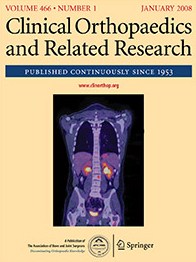
ARTHROPLASTY
Highly porous metal tibia comparable to traditional modular cemented tibia in TKA
Clin Orthop Relat Res. 2015 Jan;473(1):34-42.347 patients were involved in this study comparing highly porous metal to the standard modular cemented tibial components in total knee arthroplasty over a period of 2 to 9 years (average 5 years). This was done through randomization into 3 groups, receiving traditional modular cemented tibial components, cemented highly porous metal tibial components, or uncemented highly porous metal tibial components. Assessed outcomes included survivorship, Knee Society scores, range of motion (ROM), and complications. Results indicated that highly porous metal tibias, regardless of whether they were cemented or not, were not significantly different than traditional cemented modular tibias when considering outcomes of interest.
Unlock the full ACE Report
You have access to {0} free articles per month.Click below to unlock and view this {1}
Unlock NowCritical appraisals of the latest, high-impact randomized controlled trials and systematic reviews in orthopaedics
Access to OrthoEvidence podcast content, including collaborations with the Journal of Bone and Joint Surgery, interviews with internationally recognized surgeons, and roundtable discussions on orthopaedic news and topics
Subscription to The Pulse, a twice-weekly evidence-based newsletter designed to help you make better clinical decisions
Exclusive access to original content articles, including in-house systematic reviews, and articles on health research methods and hot orthopaedic topics
Or upgrade today and gain access to all OrthoEvidence content for just $1.99 per week.
Already have an account? Log in


Subscribe to "The Pulse"
Evidence-Based Orthopaedics direct to your inbox.
{0} of {1} free articles
Become an OrthoEvidence Premium Member. Expand your perspective with high-quality evidence.
Upgrade Now












































































